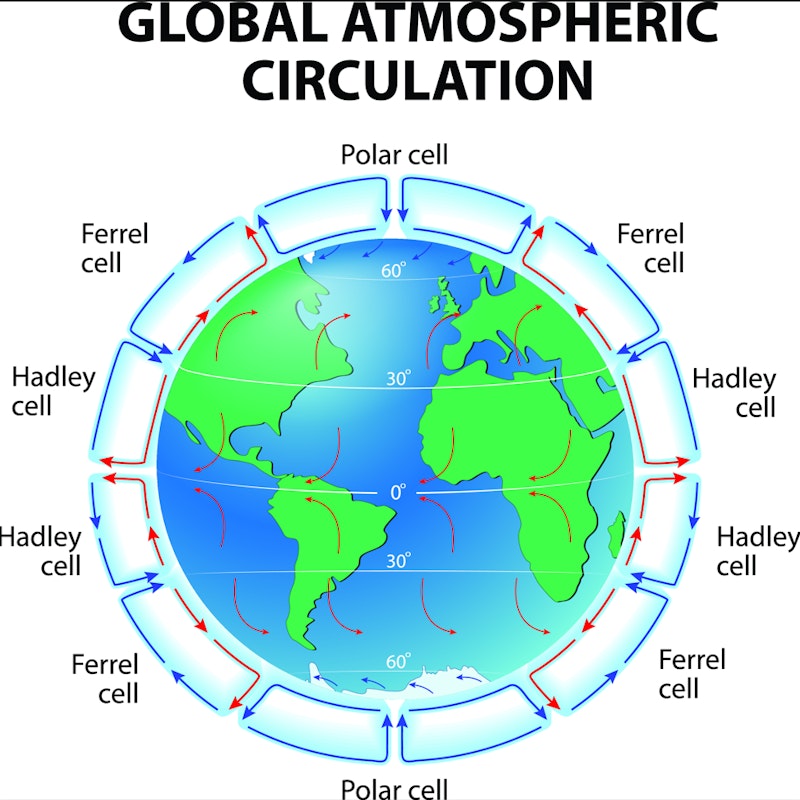Study Notes
GCSE Geography | Global Atmospheric Circulation (Weather Hazards 1)
- Level:
- GCSE
- Board:
- AQA, Edexcel, OCR, Eduqas
Last updated 6 Jan 2025
In the northern and southern hemispheres these 3 cells operate circulating air through the troposphere – this is the layer of atmosphere closest to earth – it’s between 10 and 15 km above the earth’s surface and is where most of the earth’s weather takes place.
We call this global atmospheric circulation – this system is driven by the equator where air rises due to the solar radiation there, this leads to low pressure and rainfall. When it reaches the edge of the atmosphere it moves either north or south – with the air becoming colder and denser so it sinks. This creates high pressure and dry conditions at around 30 degrees north and south – where you find many of the world’s deserts. Air rises again at 60 degrees and descends at 90 degrees.

The 3 cells in a bit more detail:
Polar cell
The sun’s rays hit the polar regions at an angle, meaning they receive less concentrated solar radiation and so don’t warm up as much as other parts of the world. The cold air at the poles descends, meaning there is no condensation and rain. This cold air spreads out from the poles as surface wind, becoming warmer. At around 60° this warm air rises, leading to clouds and rain. The air will then flow back to the poles.
Ferrell cell
This cell is driven by the other two cells. Air descends at the tropics as it is pulled down by the adjacent air in the Hadley cell. Air rises at about 60° as it is pulled up by the adjacent Polar cell.
Hadley cell (this is the one you need to know about)
The sun shines intensely on the Equator, heating the land. This, in turn, heats the air, which rises, creating a low pressure zone at lower levels. The rising air cools and condenses forming towering, cumulonimbus (storm) clouds. The air continues to rise to the edge of the troposphere where it starts to move towards the poles, north or south. At around 30° N/S the air cools and sinks, creating a high pressure zone, with a warm and dry climate (with little cloud) – typically where deserts are found. Surface winds take the air from the tropics back to the Equator, completing this cell.
You might also like
Cyclone Pam hits vulnerable island nations
14th March 2015

Will Extreme Heatwaves Become the New Norm?
7th August 2018

Arctic wildfires
27th July 2019
Tri-Dominoes - Weather Hazards (Paper 1) | Revision Activity
Teaching Activities
‘Clear the Deck’ Interactive Revision Quiz for Paper 1: Weather Hazards
Quizzes & Activities
Daily Email Updates
Subscribe to our daily digest and get the day’s content delivered fresh to your inbox every morning at 7am.
Signup for emails